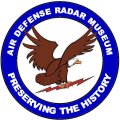 |
The Air Force Radar Museum Association, Inc. |
 |
The Air Force Radar Museum Association, Inc. |
Our current museum planning is to generally follow the timeline of the need for air defense, as follows. Each timeline period will be dealt with, described, and demonstrated as needed to discuss the period as it relates to the overall mission of air defense at that time. This will be less of a museum of electronics and radar systems, and more of an educational museum, with as much "hands on", interactive as we can develop in an attempt to be entertaining as well as informative.About AFRMA and the National Air Defense Radar Museum |
|
1918 - The first strategic aerial bombardment of London by Zeppelin results in the London Air Defense Area - the first Air Defense system. Zeppelin Raids give way to Bomber Raids. 1919 to 1939 - World War I technology is improved with advances in Acoustic Horns and Searchlights while the US Army Air Corps Exercises emphasizes offensive employment. September 1939 - 21 "Chain Home" radar stations active in the U.K. September 1940 - The Tizard Mission brings radar to the U.S. while the Battle of Britain rages. 1941 - Strategic bombardment of the U.K. begins. Ground observers attempt to track invading aircraft. Listening devices used to attempt to locate/track invading aircraft. “Chain Home Network” employed to locate and track invaders at long distance. December 7, 1941 - Radar at Opana Point, HI detects Japanese attack and is ignored. 1943 - Cavity magnetron developed (in the U.S. at MIT's Radiation Lab) helps to reduce the size of radar to allow installation in aircraft. Radar successfully used throughout the remainder of the war to intercept German aircraft by the RAF. Ground-Controlled Intercept (GCI) is developed. Post-WWII - The Soviet Union begins the building of a strategic bomber fleet. U.S. is suspicious of Soviets, as the cold war begins. The Air Force initiates multiple Air Defense programs including the Ground Observer Corps' “Operation Skywatch,” which begins to provide some warning of hostile aircraft and the deployment of LASHUP radar defense system. Early 1950s, 1960s - AC&W radar stations in the U.S. - the “Permanent” network - are constructed with the Pinetree Line, Mid-Canada Line, and Distant Early Warning (DEW) Line built in Canada. Early-mid 1960s - SAGE implementation reduces the number of radar stations. Late 1950s to early 1960s - The manned bomber threat is perceived to lessen in favor of ICBMs. 1960 - BMEWS is deployed, beginning at Thule, Greenland. BMEWS “Moon Incident” puts nation at high state of alert .October 1962 - The Cuban Missile crisis tests U.S. resolve. 1970s and 1980s - In a decades-long attempt to reduce Air Defense cost, long-range radar is turned over to FAA for Joint USAF/FAA use. High level of computerization begins. 1980s - Most interior long-range radar stations are closed. SAGE sites are closed late 1980s as the new ROCC/SOCC system comes on line. The U.S. now has little in the way of manned aircraft threat warning/intercept. The main threat is believed to be ICBM. The remaining radar coverage is looking outward for threats, not inward. CONUS coverage is mostly for commercial aircraft navigation and control, using computerization and transponders, not direct radar data “paints”. September 11, 2001 - The 9/11 Attack takes place. |